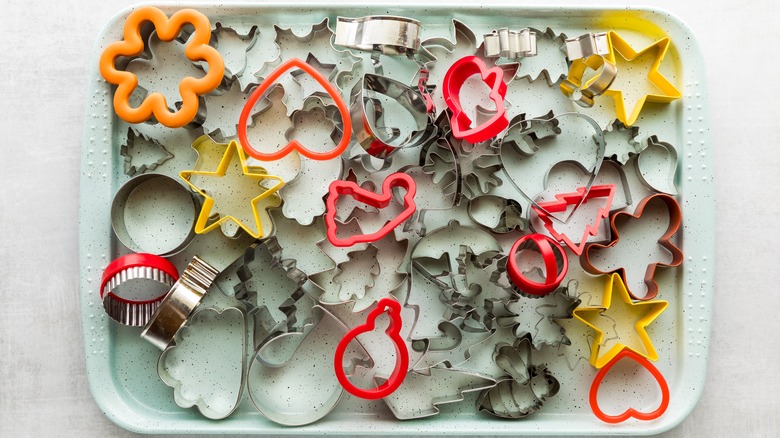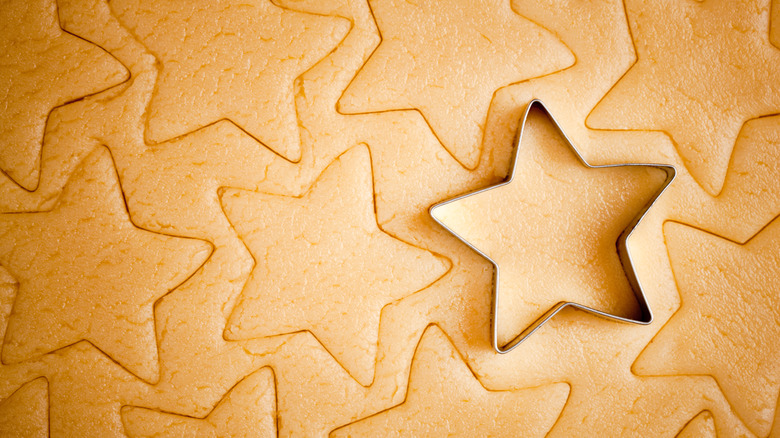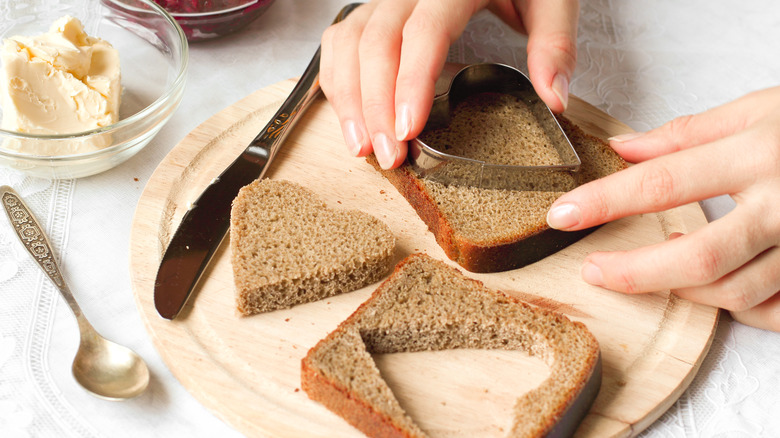Metal Vs Plastic Cookie Cutters: Which Are Better For Perfect Baked Goods?
We can't prove that a perfectly shaped cookie tastes better, but a beautiful baked good will always catch our eye. It's frustrating to labor over the right cookie cutter and dough recipe only to stamp out shape after failed shape. While we can't guarantee every cutout will be perfect, you can increase the odds by choosing the right material for your tools.
Both metal and plastic cutters will do the job, and an overturned glass can serve as a passable substitute in a pinch, but shoppers should opt for stainless steel or aluminum if possible. The thin, almost sharp edges of these materials glide through dough and make cleaner cuts. This precision is particularly beneficial for more ornate designs with many bends and details.
Even better, rust-resistant metal is designed to withstand the physical demands of the kitchen. It won't snap in half after being dropped on the floor, chewed by a pet, or packed in a suitcase. The material can also tolerate heat, so you can use it on a skillet to shape pancakes and eggs.
Tips for shaping neat cookies
Once you've secured the proper cookie cutters, make sure you set them up for success before cutting into your dough. Just as you flour your workspace and rolling pin to minimize sticking, dust the metal cutters with flour before pressing them into place. If you're concerned about flour accumulating on the edges of your cookie or altering the dough's color, consider using confectioners' sugar or cocoa powder instead.
Also, try rolling out the dough while it's still warm, then chilling it in a sheet rather than a disk to simplify cutting and separating. Bakers who still encounter difficulties may need to use nonstick spray on their cutters to help the shapes release more easily. If all else fails, reach for a chopstick or toothpick to dislodge any stubborn dough.
Don't store your cookie cutter kits just yet. Even drop cookies, like oatmeal raisin, snickerdoodle, and classic chocolate chip, can benefit from these shapers. The trick is to use a circular mold or a biscuit cutter to create the roundest possible cookies. Place the hot cookies fresh out of the oven into the metal rounds and swirl them to achieve uniform circles.
Elevate desserts and snacks with cookie cutters
Other sweet confections and savory treats also benefit from these meticulously designed tools. Cookie cutters can dress up pie crusts, whether store-bought or homemade. They can also help confine sprinkles to a precise shape as you decorate cakes or hollow out the center of layered pastries, allowing you to fill them with candy.
They're also a trusted tool in chef Ina Garten's kitchen, where she uses them to add a whimsical touch to her soups, cutting seasoned puff pastry into shapes and pairing these baked delights with her dishes. Similarly, cooks can transform stale bread or sourdough discard crackers into unexpected shapes to accompany a meal.
These durable tools can also beautify snacks, garnishes, and toppings. Flower molds, for instance, can transform ingredients ranging from pepperoni slices to melon into springtime embellishments for pizzas and lemonades. Lovers of charcuterie boards and children alike can elevate finger foods, such as toast points. The metal cutters are adept at trimming the crusts from peanut butter and jelly, cucumber and cream cheese sandwiches, and melty grilled cheeses. Moreover, these artful designs can turn cheese and cured meats into uniform, stackable options that pair wonderfully with homemade crackers.



